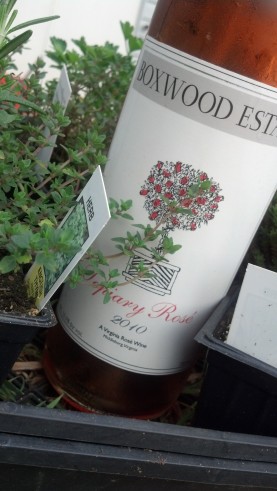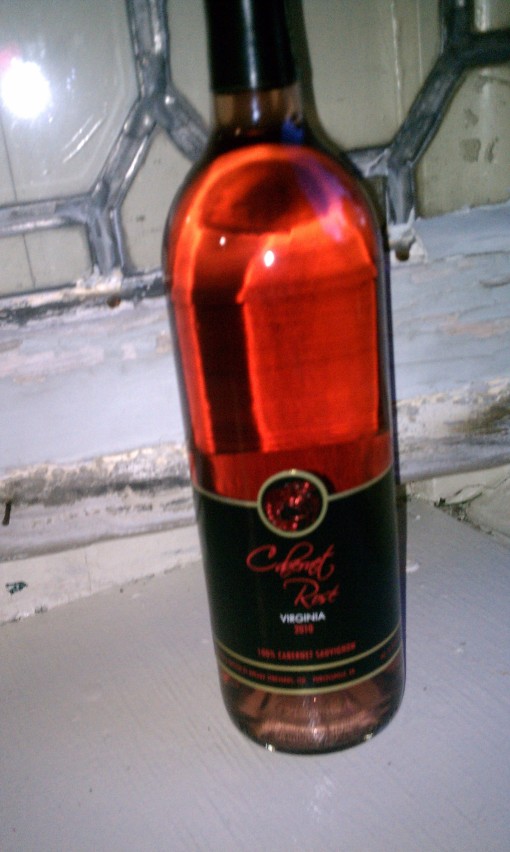When Allan from CellarBlog asked if we’d participate in #varosé day, we immediately knew that we were in. We’re big fans of drinking pink and always try to have a few bottles on hand. Rosé wines are typically light and refreshing, so they’re great in the warm months (of which VA has too many). The light berry flavors so often found in rosés can also bring a welcome touch of spring and summer to cold winter days, so we’re fond of year wine drinking of the pink. Finally, they’re often very food friendly and pair well with a wide variety of foods from salad to turkey to BBQ. We figured the best way for us to participate in this day was to actually crack open some of those pink bottles that have languished on our wine racks through GEG’s illness last summer and our too busy for drinking schedules of the past 6 months.
The first of these bottles we opened was the 2010 rosé from Stinson Vineyards. Most rosés in VA are made from Bordeaux grapes (cab franc, can sauv, and merlot most commonly) or chambourcin, so this rosé made from mouvedre is an unusual find. This dry but fruity wine held up surprising well to being left on the shelf a tad to long. It wasn’t particularly complex, but it was very refreshing. It made me think of watermelon along with a touch of mild, somewhat watery, strawberries. As I spent more time with the wine, I also noted some pink grapefruit. I enjoyed my time with this wine quite a bit.
The second rosé we’ve enjoyed recently was another 2010 – this one was the Topiary Rosé from Boxwood Winery. This is a blend of cab franc and malbec, and we paired this one with some grilled pizza – really yummy shrimp and feta grilled pizza on a garlic and rosemary crust to be exact. Again, this wine held up well to the test of time. I noted light strawberry notes on the nose and strawberry and citrus on the palate along with some flintiness. It was a great wine to savor with our pizza as we enjoyed our patio.
Our third rosé was the 2011 from Breaux Vineayrds. This wine is a blend of nebbiolo, cab sauv, and chambourcin, and in the year or so since it’s release, it’s really grown on me. It’s a dry wine, but there’s so much fruit to be found in the class that it was a bit much for me at first. The fruit may have softened a bit, but I still note tons a strawberry, raspberry, and cherry flavors. There’s also a touch of herbaciousness that adds a bit of depth to this wine. This is one I don’t feel comfortable suggesting food pairings for – other than perhaps a berry-heavy summer salad – but it was definitely enjoyable as a sipper on its own. I’d sum it up as a fun wine.
How do you feel about drinking pink? What are your favorite VA rosés? How are you celebrating #varosé day? What new releases would you recommend we check out?
Inquiring minds want to know!


























